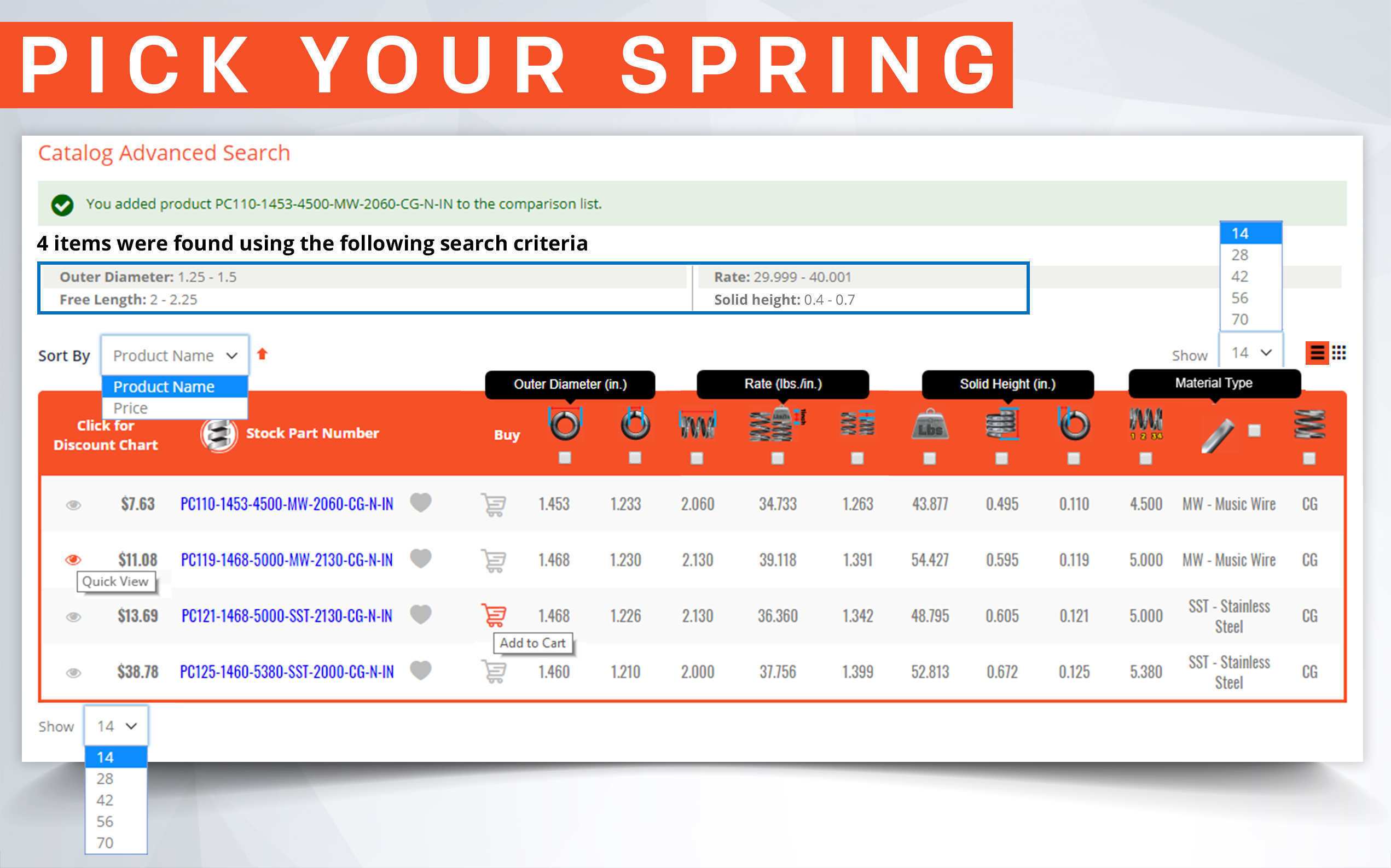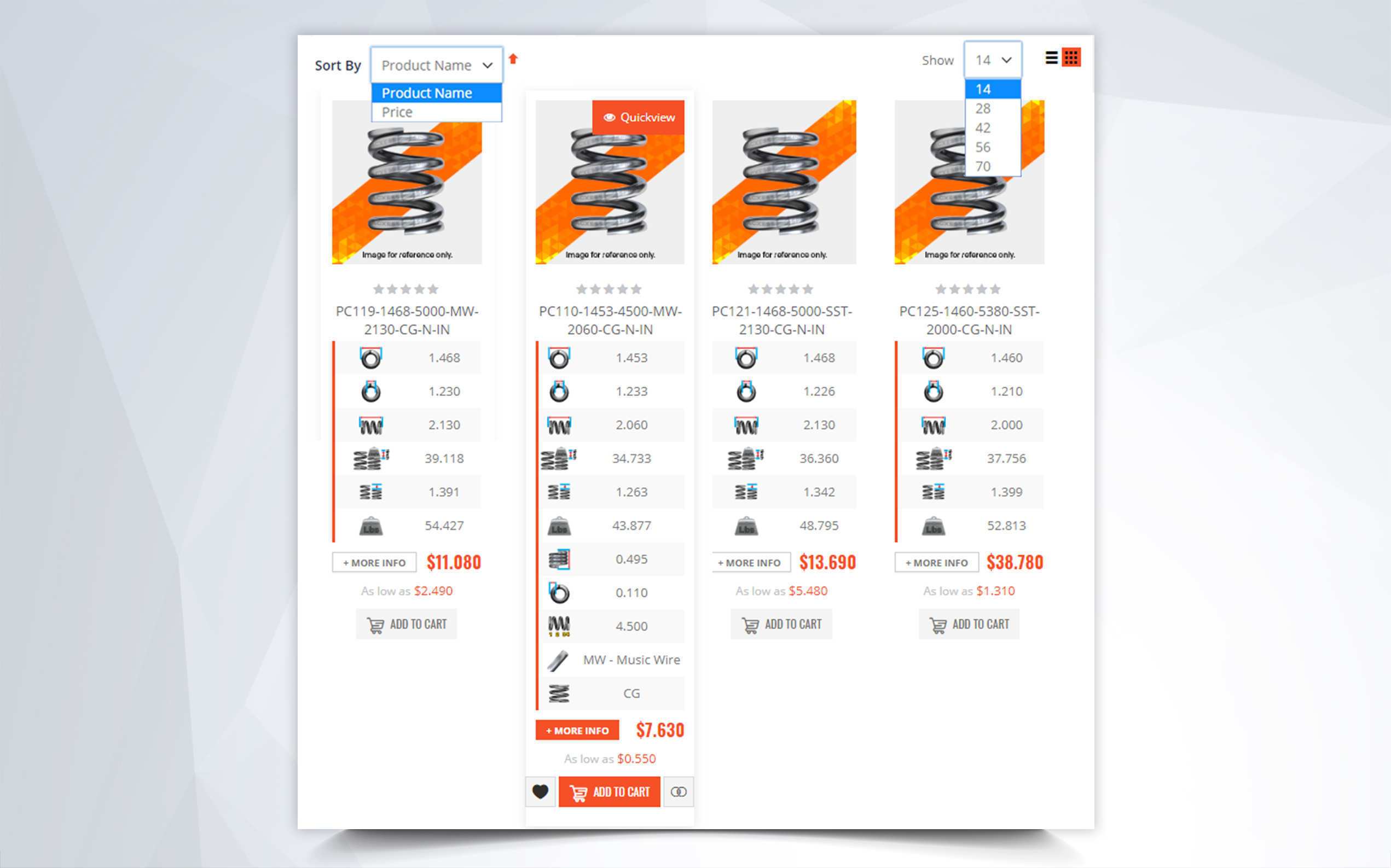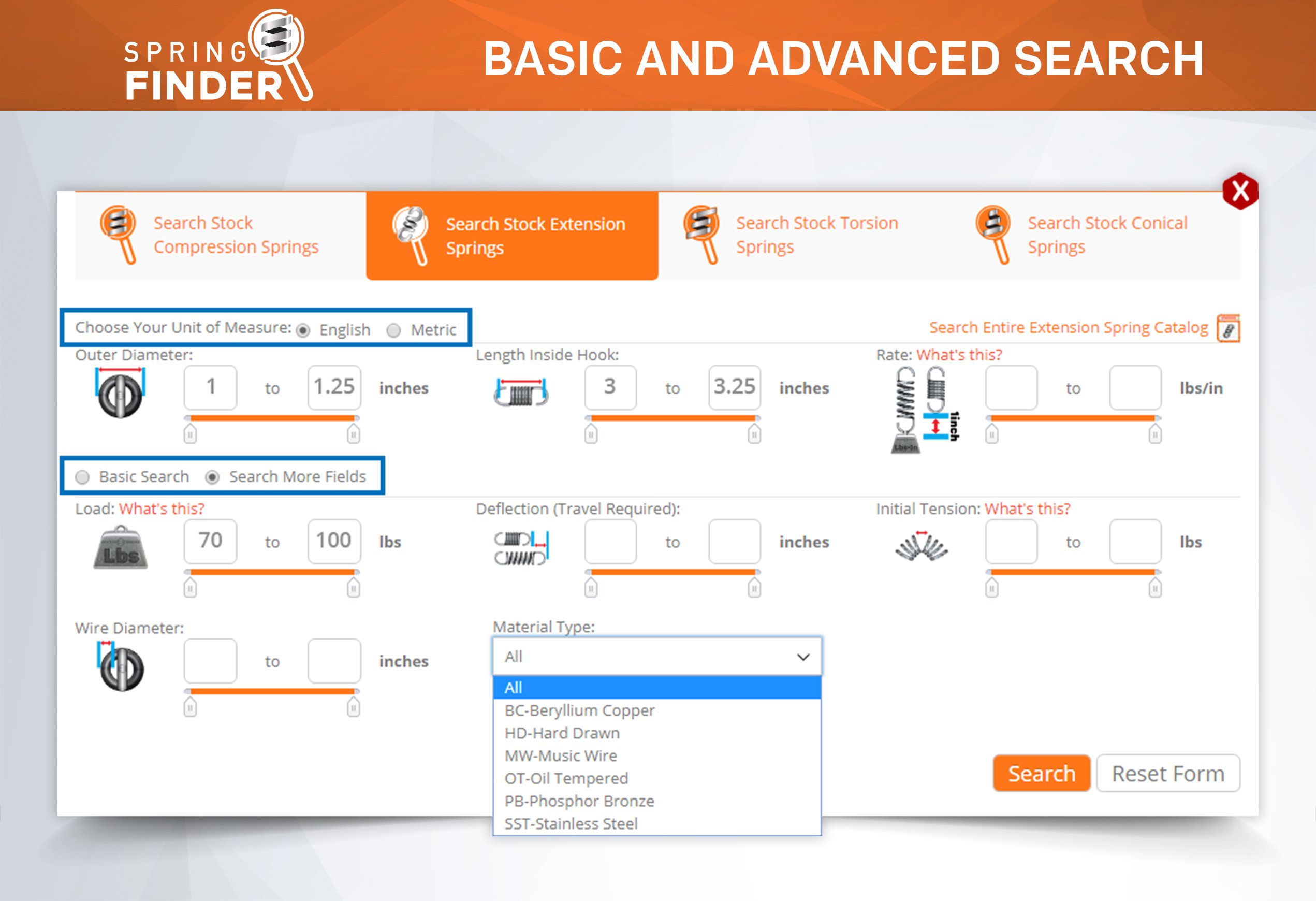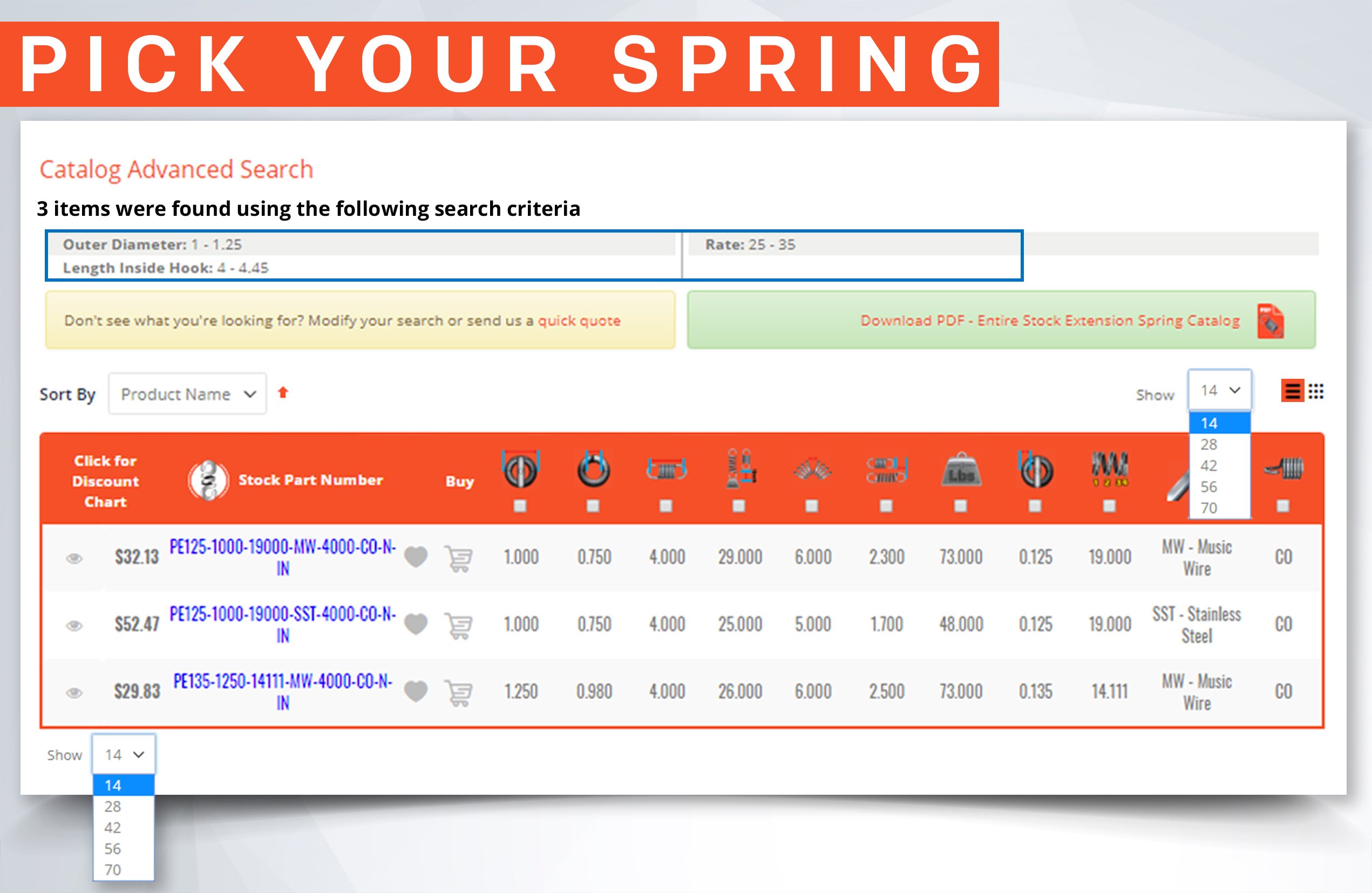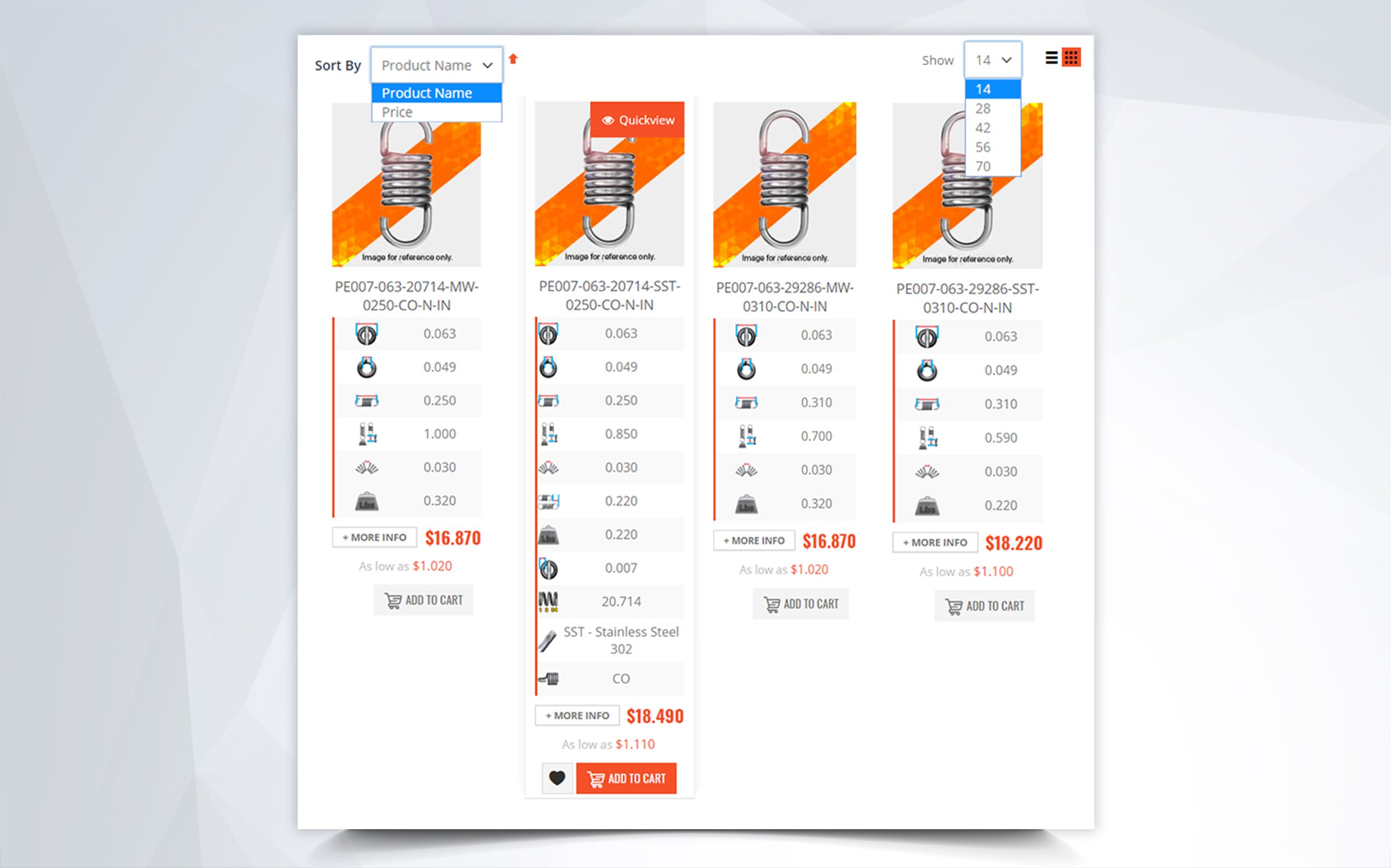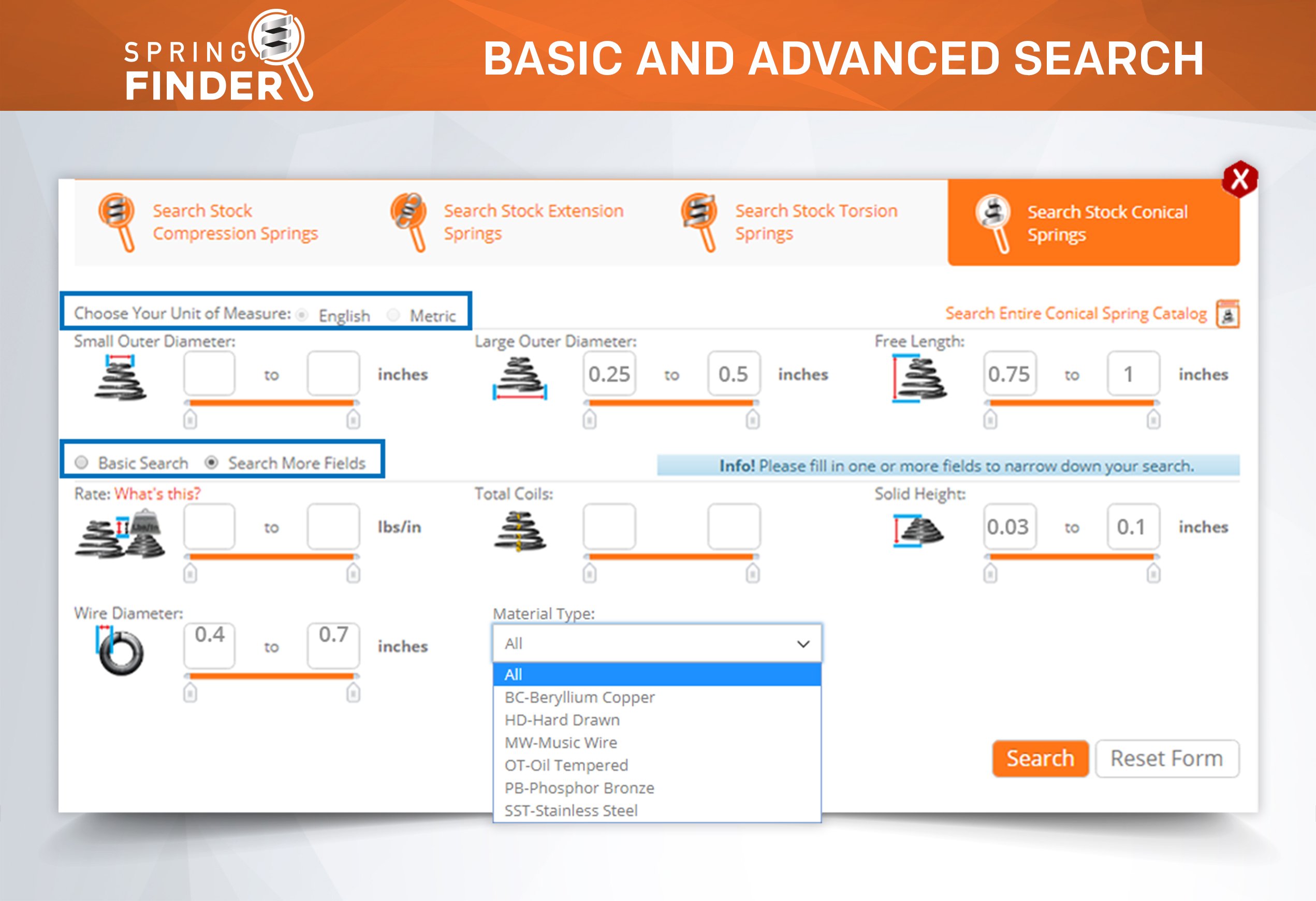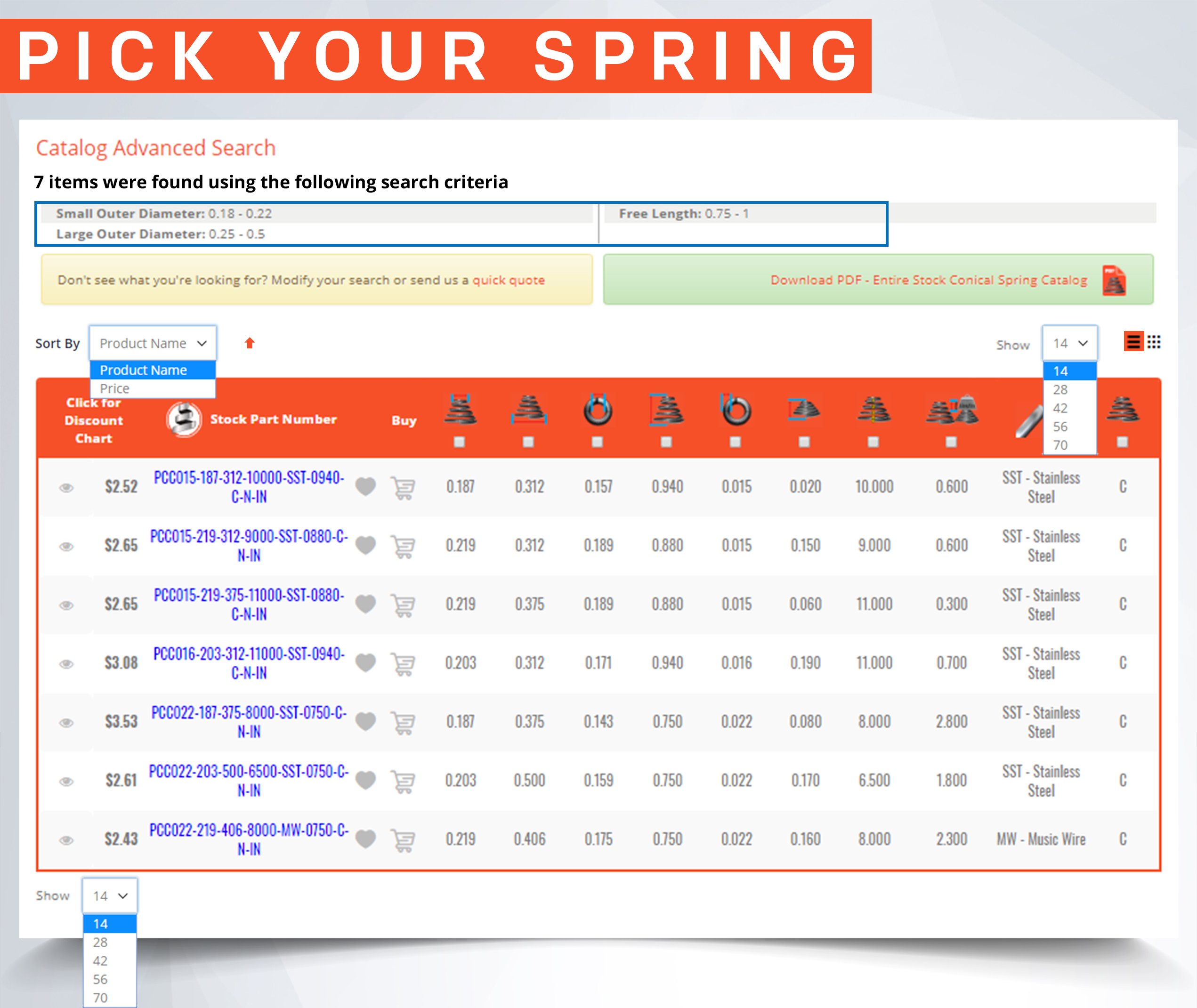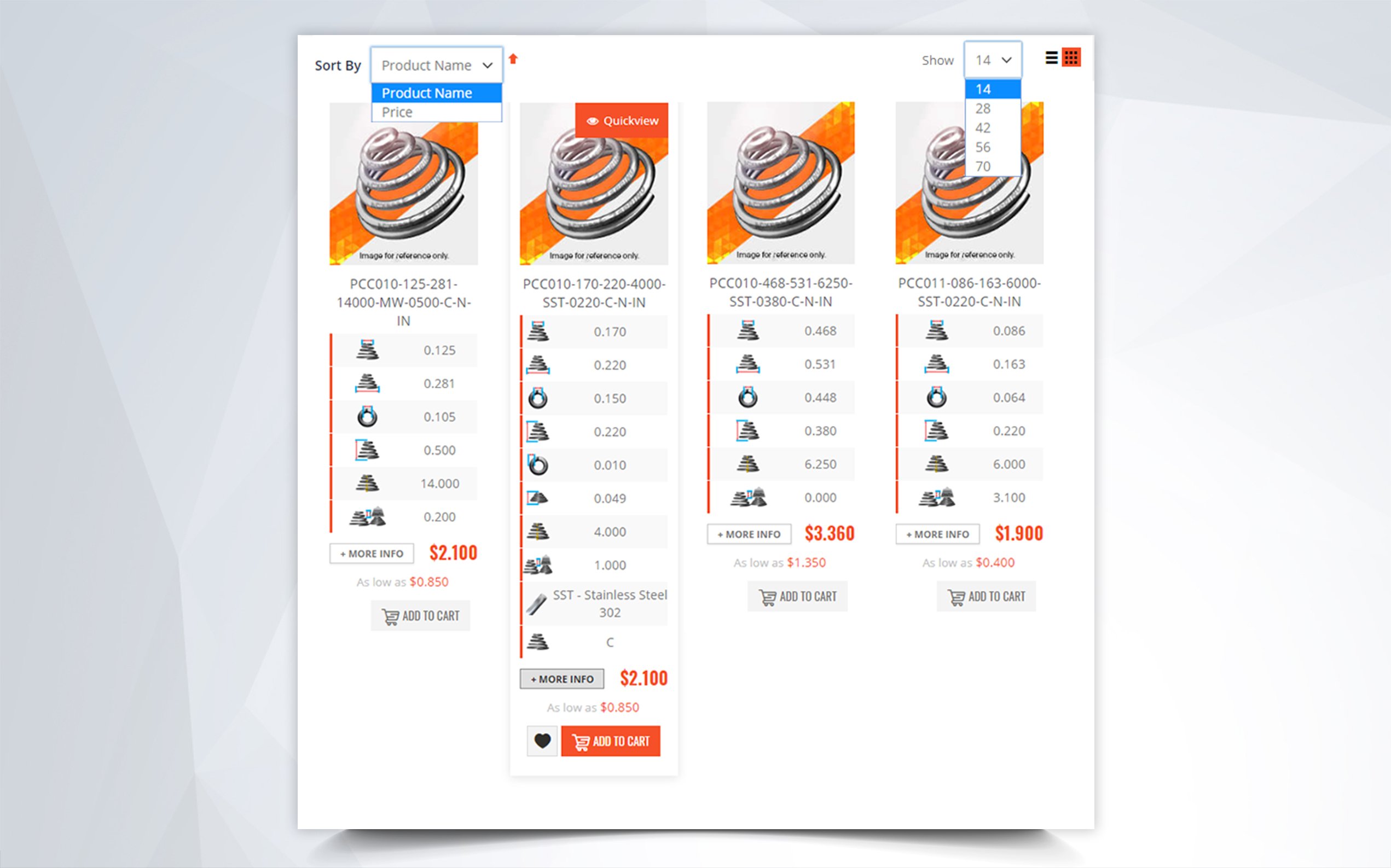Fatigue Life of a Compression Spring
Definition: The life cycle (fatigue life) of a spring is its life expectancy before taking a set or breaking during deflection.
When a spring breaks or takes a permanent set, it is because it is under a lot of stress. Our spring calculator can help solve that problem. It does so using your spring’s physical dimensions to provide accurate specifications and valuable information regarding the limits and safe use of your specific spring.
The proportion of the spring's dimensions are what can cause it to be stressed. The spring index is the first indicator of this. If you have a tight index, your spring will be stressed and have a low elastic limit. This happens when your wire diameter is very large in proportion to your outer diameter. The same happens with the free length and total coils. The more pitch you have in between your spring’s coils, the more stress your spring will have. This means you have too little coils in proportion with the free length.
Having a stressed spring is fine when you don’t need a lot of travel or your spring is initially used to absorb shock. If you want your spring to travel a considerate amount compared to its free length, you will need to keep a balance between force and elasticity. You do this by avoiding a tight spring index and having a good amount of coils; not too many, but just enough.
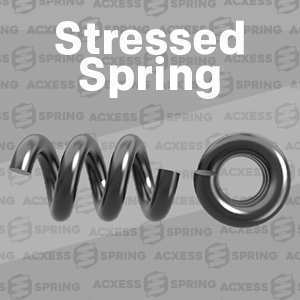

Our spring calculator, Spring Creator, will calculate your spring’s elastic limit. To find it, go to the “Answers” section after calculating a design. You will see the Maximum Travel Considering Solid Height as well as the Maximum Load Considering Solid Height. These values will tell you if your spring is relieved enough to travel as much as you need or be able to undergo the required load. If the Potential Travel is higher than the Max Travel Considering Solid Height, you can increase the Free Length a little to be able to get more force out of your spring through more travel. The only way this value might be higher is if you have a relieved spring.
To relieve your spring from stress and increase its fatigue life, you can make the following adjustments:
- Increase the Outer Diameter
- Decrease the Wire Diameter
- Increase the Active Coils
| Less Force | More Force |
|---|---|
| – Wire Diameter | + Wire Diameter |
| + Outer Diameter | – Outer Diameter |
| + Coils | – Coils |
| + Free Length | – Free Length |
Feel free to contact our engineers to learn more about the subject or get spring design help. We have over 30 years of experience in the industry and have come across some very intricate designs so regardless of how complicated your spring can make it happen or be very honest with you as to whether it is doable or not.







